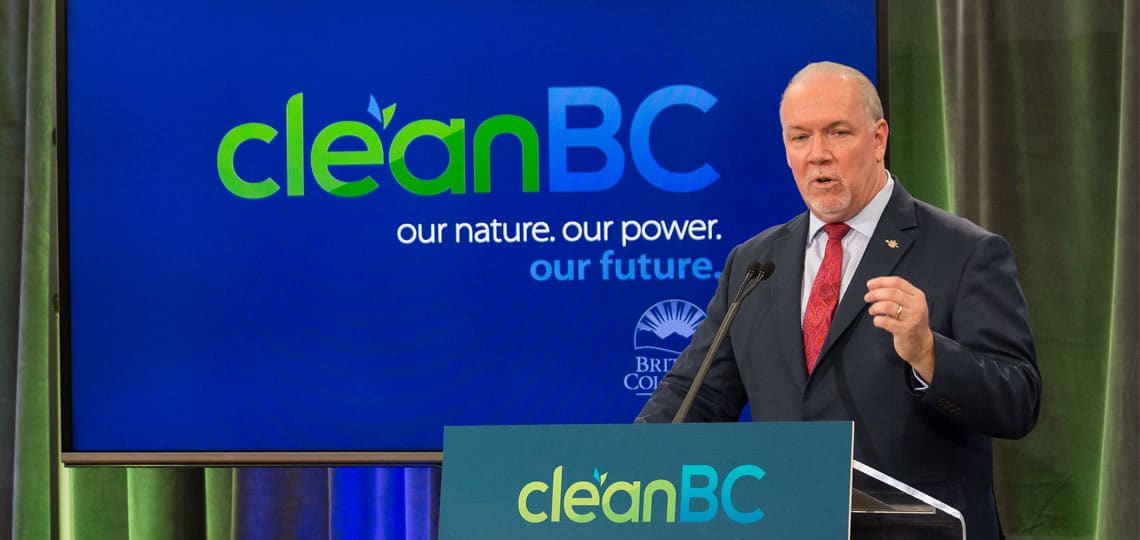The latest figures on British Columbia’s carbon emissions, released last week, are sobering.
According to the report, B.C.’s emissions rose by 1.7 per cent in 2017. Released annually, the inventory shows data from two years earlier. A 1.7 per cent rise might not sound like much. What it translates to, however, is a backwards step when we only have until 2030 to halve emissions or face climate catastrophe. The science is screaming that we need to cut carbon emissions and B.C.’s are headed the wrong way.
It’s too early to tell whether this government’s CleanBC strategy will reverse the trend. There’s no question some CleanBC policies — electric vehicle incentives, better home insulation and requiring manufacturers meet the growing demand for EVs — are steps forward. Even so, the government projects B.C. will fall 25 per cent short of the 2030 target. The 2017 emissions data shows getting there will be more of an uphill battle than previously thought. And the province’s push for LNG makes it even harder to see how the numbers will add up.
So while the government says it’s committed to getting B.C. on track, there is a gap between rhetoric and reality.
B.C.’s record on climate targets is abysmal. It missed the 2016 target. Then the government scrapped the 2020 target when it became impossible to achieve.
We also don’t have to look far to see how the election of a populist government can derail progress. Protecting the climate is too important to backslide with every change in government. We’ve run out of time to take one step forward and two steps back. That’s why all eyes should be on the B.C. legislature this fall.
MLAs are due to table a new climate bill, aimed at empowering British Columbians to hold politicians to account for meeting climate targets.
A year after launching CleanBC, this is an opportunity for the government to renew its vow to meet climate targets while making sure its successors don’t claw back good laws and policies.
There are three key things I’ll be looking for in the new climate bill:
- It must force government to publish detailed plans showing who will do what, by when, to meet climate targets.
- Second, the law must break current long-term targets into manageable chunks. A 2030 target is too distant when politicians struggle to think beyond the next election. Five-year targets would better align with the election cycle. In turn, this would give voters greater power to hold leaders to account at the ballot box.
- Third, B.C. needs a climate watchdog to hold government’s feet to the fire. Climate policy is complicated. Governments can hide behind this by shrouding failures in spreadsheets and statistics. We need an independent expert body that will cut through the spin, tell the public if the government’s on track, and help course-correct if it isn’t.
Eventually, B.C.’s targets themselves will also need an overhaul. The science shows B.C.’s current target of 80 per cent by 2050 doesn’t go far enough. Preventing climate catastrophe requires full decarbonization.
This summer may have been a reprieve from extreme wild fires. But for many British Columbians — especially those who had to evacuate their homes or struggled to breathe the smoky air — the 2017 and 2018 infernos don’t feel so distant.
By delivering a strong new climate law, the NDP can set an example for governments of all levels across Canada. Most of all, it can help ensure that, rather than causing dismay, future emissions reports show B.C. is back on track on climate.
This opinion piece was originally published in The Province on September 17, 2019


